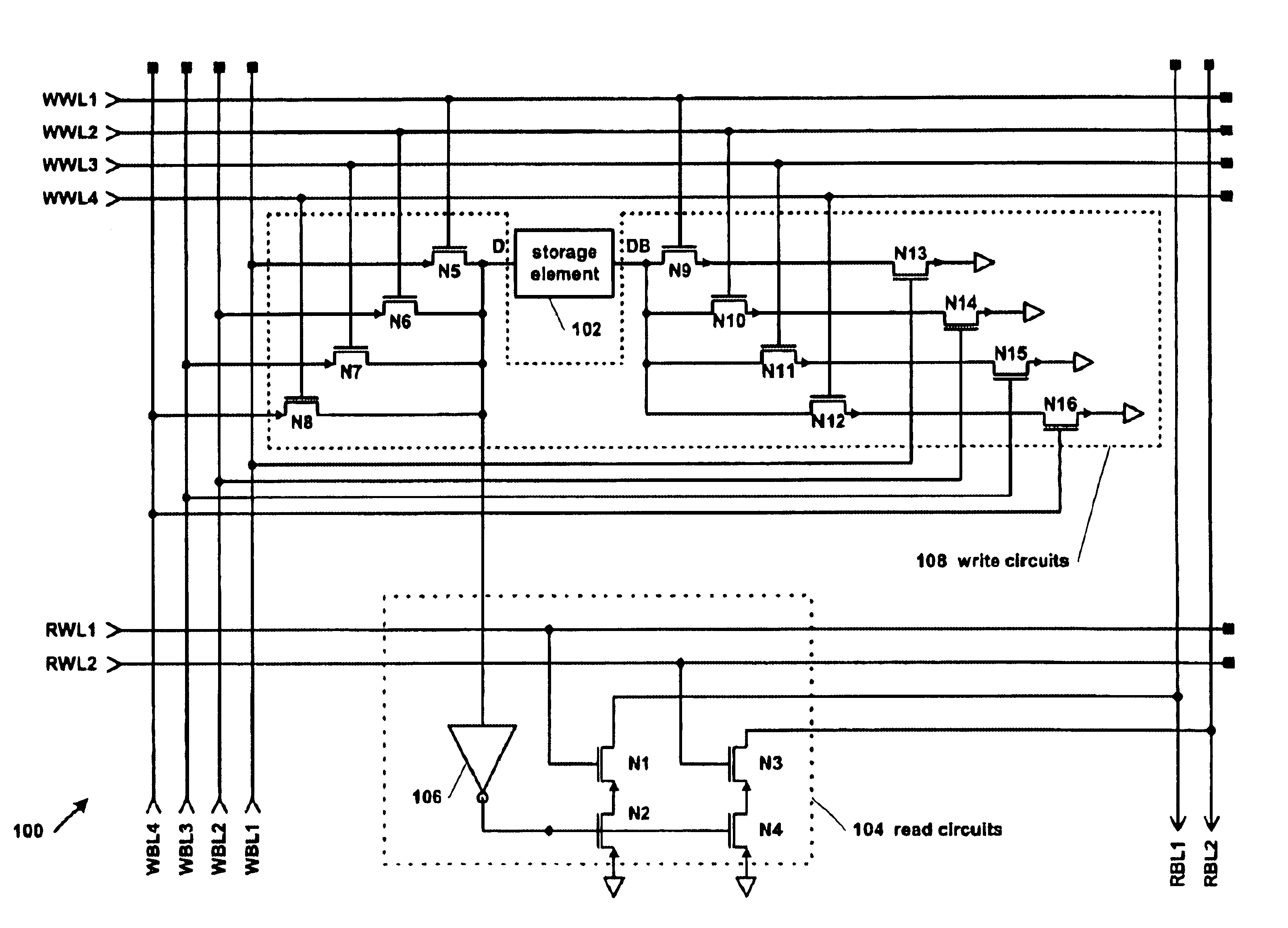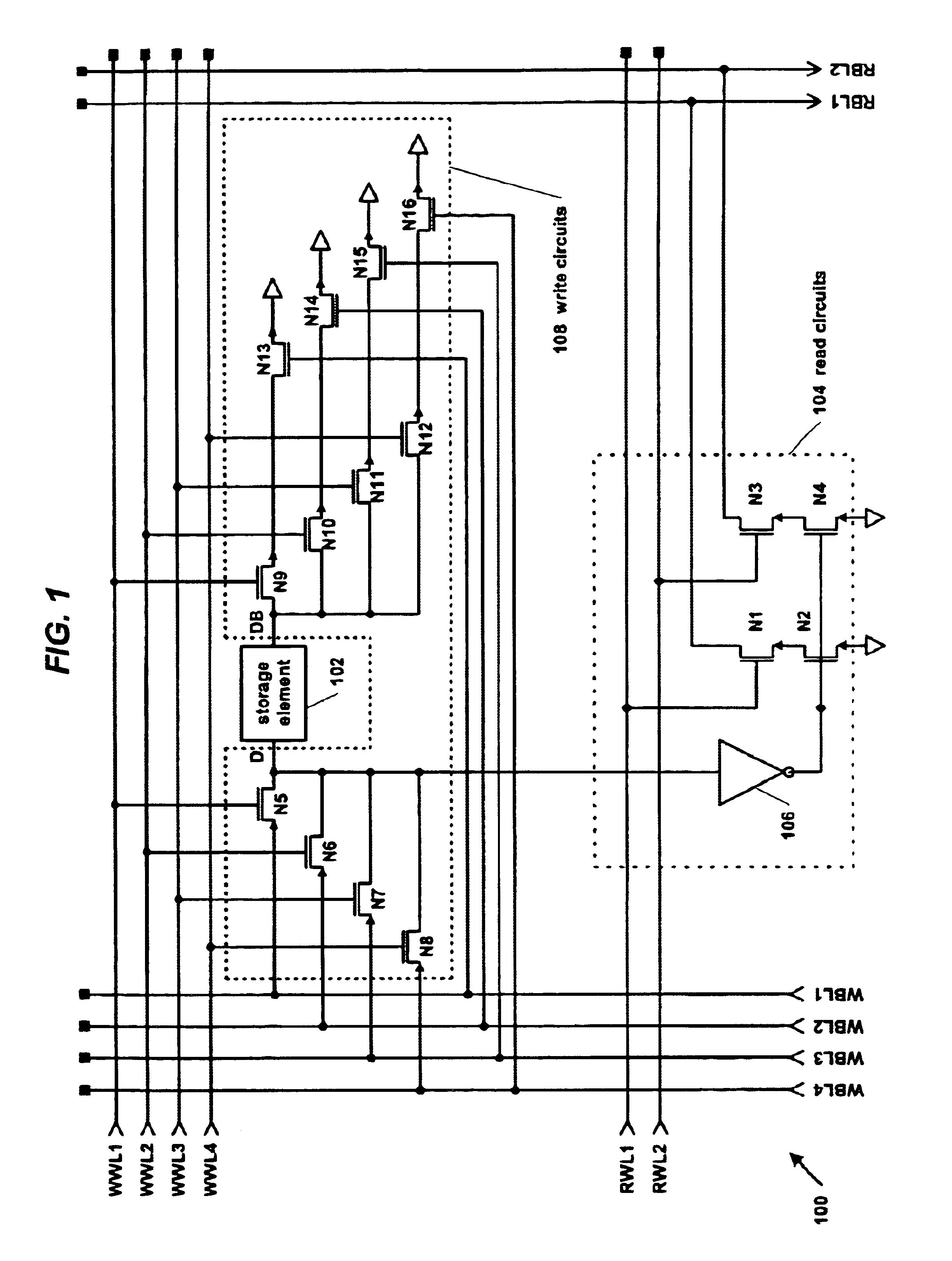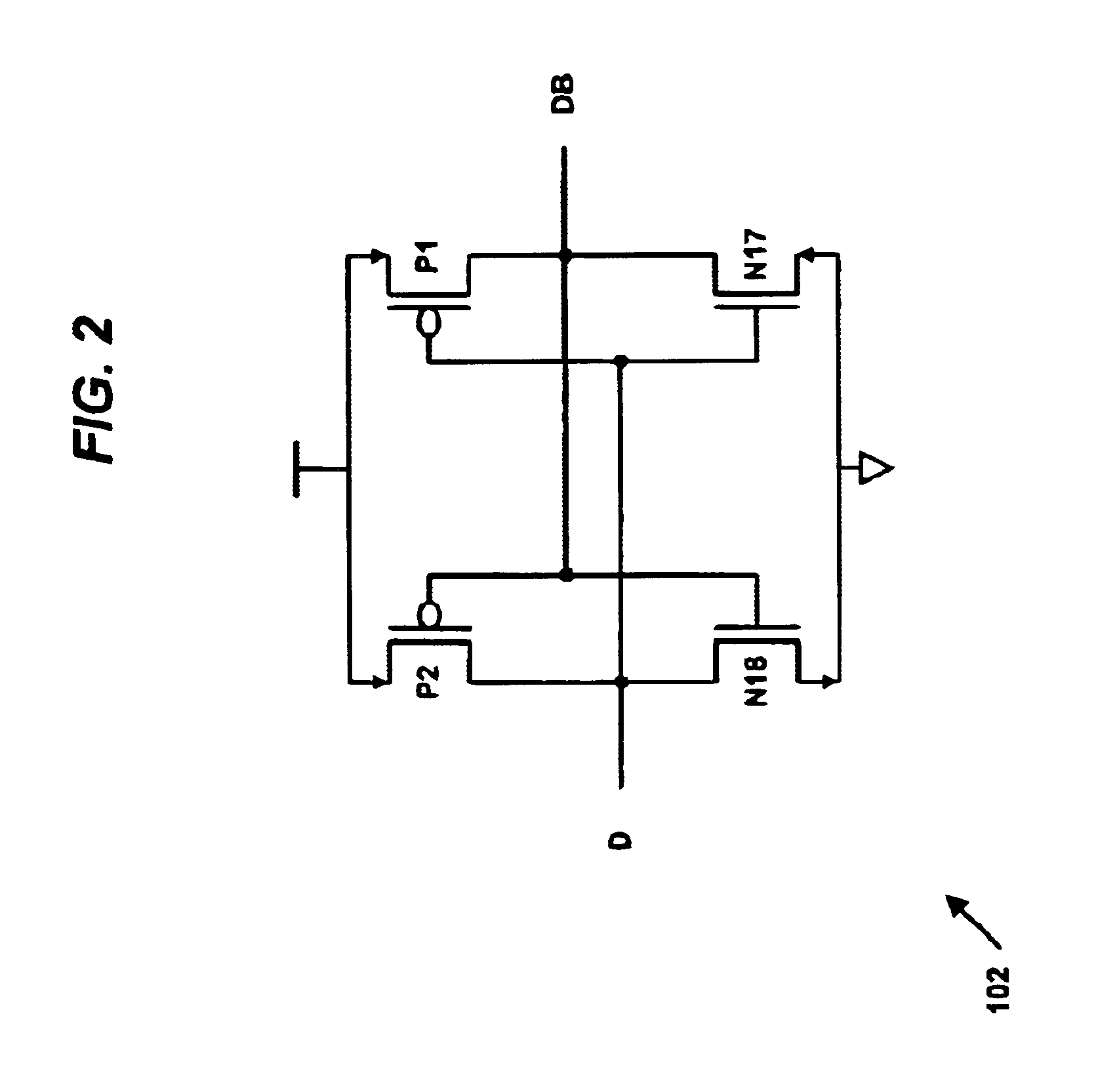Reduced size multi-port register cell
a register cell, multi-port technology, applied in the field of semiconductor register cells, can solve the problems of extreme metal wire congestion in the register file, affecting the performance of the processor, defeating the advantages of the pipelined nature of the processor, etc., to reduce the number of metal wires required, reduce the number of transistors, and reduce the number of metal wires.
- Summary
- Abstract
- Description
- Claims
- Application Information
AI Technical Summary
Benefits of technology
Problems solved by technology
Method used
Image
Examples
Embodiment Construction
Throughout the instant disclosure, when circuit elements are described as being "coupled", the term "coupled" means that the elements are directly connected together, such as by a metal wire or semiconductor material. Alternatively, the term "coupled" means the elements are indirectly connected through another circuit element.
Referring now to FIG. 1, a block diagram of a multi-ported register cell 100 according to the present invention is shown. The embodiment of register cell 100 shown in FIG. 1 includes four write ports and two read ports. However, the transistor configuration of register cell 100 may be adapted to include other numbers of read ports and write ports and still enjoy the advantages of the present invention.
Register cell 100 includes a storage element 102, or storage transistors 102. Storage element 102 is configured to store a single bit of data of a register, such as a register in a register file. Storage element 102 includes a true input / output line and a compleme...
PUM
 Login to View More
Login to View More Abstract
Description
Claims
Application Information
 Login to View More
Login to View More - R&D
- Intellectual Property
- Life Sciences
- Materials
- Tech Scout
- Unparalleled Data Quality
- Higher Quality Content
- 60% Fewer Hallucinations
Browse by: Latest US Patents, China's latest patents, Technical Efficacy Thesaurus, Application Domain, Technology Topic, Popular Technical Reports.
© 2025 PatSnap. All rights reserved.Legal|Privacy policy|Modern Slavery Act Transparency Statement|Sitemap|About US| Contact US: help@patsnap.com



